|
|
 |
|
September 27, 2012
Creators Syndicate
When it comes to wine, nearly everyone loves a steal, including wine
professionals. Thus it was no surprise that the fourth annual Sommelier
Challenge in San Diego produced a number of impressive winners that sport a
modest price tag.
Over the weekend of September 15-16, more than a dozen certified sommeliers
evaluated 802 wines from 13 countries and found much to their liking in the
under-$20 range.
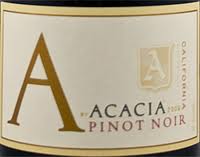 The best example of this is the River Road Family Vineyards and
Winery from Sonoma County in California. River Road did very well, winning gold
medals with three different pinot noirs, all retailing for less than $20. You
don't even have to be an aficionado to realize that's a very good price for
pinot. The best example of this is the River Road Family Vineyards and
Winery from Sonoma County in California. River Road did very well, winning gold
medals with three different pinot noirs, all retailing for less than $20. You
don't even have to be an aficionado to realize that's a very good price for
pinot.
"We are very proud of (our) pricing," owner Ron Rubin told me last week.
Indeed, River Road Family found the sweet spot with its 2011 Russian River
Valley Reserve Pinot Noir ($19.99), its 2011 Russian River Valley Boschetti
Vineyard Pinot Noir ($19.99) and its basic 2011 Sonoma County Pinot Noir
($15.99). Those are stunning prices for good pinot.
River Road also won a silver medal for its 2011 Russian River Valley Pinot
Meunier ($18.99). Pinot meunier is typically used in sparkling wine and
Champagne blends, but there are a handful of producers who make a table wine
from this fairly rare grape variety. And to the haul River Road added a silver
for its 2011 Un-Oaked Sonoma County Chardonnay ($12.99).
A by Acacia didn't win as many medals as River Road, but the winery (a second
label for the iconic Carneros winery Acacia Vineyards) scored a platinum medal
for its 2011 Pinot Noir, California ($14.99). At the Sommlier Challenge, wines
are grouped and evaluated within a price range, so it's all the more impressive
that this one was awarded platinum and sent forward to the championship rounds
to be tasted side-by-side with much more expensive wines in the effort to
determine best of category and best of show.
A by Acacia also took a gold medal for its 2010 California Chardonnay
($14.99).
Another good example of exceptional wine at a modest price
is the Beronia 2006 Rioja Reserva ($19.99). What makes this wine so special at
the price is its ability to improve with age. By Rioja standards, the 2006
vintage is in its infancy.
Enjoyable now, the 2006 Beronia has the depth and structure to deliver on its
potential over the next 15 years.
In general, Rioja represents good value because prices have been stuck at the
same level for the past 15 years or so despite the fact there has been a
renaissance in the region and the wines are better than ever. Beronia is one of
the many quality producers, and its reserve wine is always top-notch.
Other top-notch value wines discovered at Sommelier Challenge IV:
Trapiche 2010 Malbec, Oak Cask, Mendoza, Argentina ($11.99) won a close vote
for best malbec of the competition. That's no surprise given Trapiche's position
as an industry leader in Argentina, but the real story here is that there's
still a $12 malbec being made with an eye toward quality. Much of the
inexpensive malbec these days lacks character and is relatively boring. This
vintage of Trapiche offers rich, supple fruit and a persistent finish. It
clearly overdelivers on its price tag.
Bonterra Vineyards led the way among producers of organic wines, winning a
platinum, a gold and two silvers with wines in the $13.99-$15.99 range. The
platinum medal went to its 2010 Mendocino County Pinot Noir ($15.99). Again,
this is a remarkable price for a pinot noir with enough character and structure
to impress the professionals.
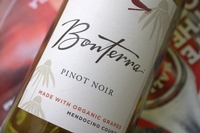 Bonterra has long been the leader in organic wine
production in California, but seemed to fall off its game a few vintages back.
Under new ownership now, the winery (based in Mendocino County) has had a string
of successful wines from the 2010 and 2011 vintages. Bonterra has long been the leader in organic wine
production in California, but seemed to fall off its game a few vintages back.
Under new ownership now, the winery (based in Mendocino County) has had a string
of successful wines from the 2010 and 2011 vintages.
It won a gold medal with its 2011 Sauvignon Blanc, Lake & Mendocino
Counties ($13.99), and silvers for the 2011 Mendocino County Chardonnay ($13.99)
and 2010 Mendocino County Merlot ($15.99).
Then there is the Clayhouse winery from Paso Robles with its entry-level
wines all priced at $15. The 2010 Clayhouse Syrah not only won a gold medal, but
it's also one of my Wine Talk candidates for value wine of the year. The 2009
Clayhouse Cabernet Sauvignon and 2010 Clayhouse Malbec were awarded silver
medals, and both of these $15 wines possess exceptional characteristics that you
might expect in comparable wines at twice the price.
What I like about all three Clayhouse value winners is their impeccable
balance. These are wines that have great flavors without high alcohol levels,
and that makes them especially good food wines.
And, of course, the price is right.
Posted by Robert Whitley at 3:21 PM
|
|
September 18, 2012
In a world, especially the wine world, where hyperbole is the default reflex
of the enthusiast, it is good to remember that sometimes the wine in front of
you truly is great.
So forgive me if I remain in awe of the wine that rose to the occasion Sunday
and claimed the Wine of the Year award at the fourth annual Sommelier Challenge
International Wine Competition in San Diego. Charles Heidsieck's 1995 Blanc des
Millenaires ($180), a tetes de cuvee Champagne so rare that it has been produced
in but four vintages, was the overwhelming favorite of the 13 certified
sommeliers tapped to evaluate the more than 800 entries submitted to Sommelier
Challenge IV.
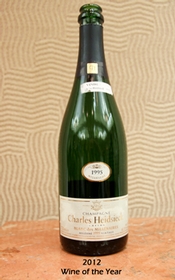 The sommeliers tasted each wine "blind," with no knowledge of
producer or price, as they steadily worked their way through Sunday's
championship round of tasting, which also determines best of show and best of
category awards. The sommeliers tasted each wine "blind," with no knowledge of
producer or price, as they steadily worked their way through Sunday's
championship round of tasting, which also determines best of show and best of
category awards.
In the final vote of the competition, one sparkling wine, one red wine, one
white wine and one dessert wine stood for the ultimate prize, with the Blanc des
Millenaires (11 votes) easily besting Black Stallion Winery's 2008 Cabernet
Sauvignon, Napa Valley ($65); Darcie Kent's 2010 DeMayo Vineyard Chardonnay,
Livermore Valley ($30); and Inniskillin's Riesling Icewine VQA, Niagara
Peninsula, Canada ($80).
The Blanc des Millenaires first impressed the judges with remarkable
structure and complexity, but after learning that the winning wine was a
17-year-old Champagne, it was the freshness that seemed to matter most. It
should be noted, too, that Charles Heidsieck's 1995 Blanc des Millenaires was
twice voted Critics Challenge Winery of the Year, the second time more than five
years ago.
So it is not only a great wine, but it's been a great wine for a very long
time.
Of course, there were numerous other highlights. The judges may have ended
the competition on an expensive note, but they found plenty of value gems along
the way.
In the championship round, for example, the vote for best of show red wine
included a delicious $16 pinot noir, the 2010 Bonterra from Mendocino County,
and two malbecs for less than $12, the 2010 Finca Las Moras and the 2010
Trapiche Oak Cask, both from Argentina.
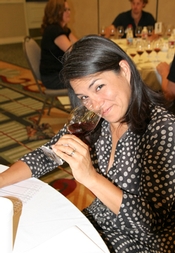 Another wine
from Argentina, this one white, also caused a stir in the vote for best of show
white. The Amalaya 2011 Vino Blanco de Altura ($11), an unusual blend of
torrontes (85 percent) and riesling (15 percent), came within one vote of a tie
for best white, which went to the Darcie Kent Chardonnay. Another wine
from Argentina, this one white, also caused a stir in the vote for best of show
white. The Amalaya 2011 Vino Blanco de Altura ($11), an unusual blend of
torrontes (85 percent) and riesling (15 percent), came within one vote of a tie
for best white, which went to the Darcie Kent Chardonnay.
Other performances of note:
Bracey Vineyards, a small garagiste winery run out of North Carolina by
winemaker Robert Bracey, took two platinum awards, three golds and a silver. The
platinum winners were the 2009 Cuvee Rive Gauche, Bordeaux AOC ($120) and the
2008 Cabernet Sauvignon, GF ($120) from Oakville in the Napa Valley. Bracey owns
no vineyards, purchases all of his grapes and make his wines at various "custom
crush" facilities in California and France. Following scrutiny of all of the
results, Bracey was named Winery of the Year.
NASCAR legend Jeff Gordon also had an impressive performance, winning
Best Pinot Noir (a tie) with the 2009 Jeff Gordon Cellars Pinot Noir, Sonoma
Coast ($56) and Best Merlot with the 2005 Jeff Gordon Cellars Merlot, Napa
Valley ($49).
Darcie Kent, besides the best of show white award, also won platinum for its
2011 Sauvignon Blanc, Rava Blackjack Vineyard, Monterey County ($18). Darcie
Kent won nine medals overall.
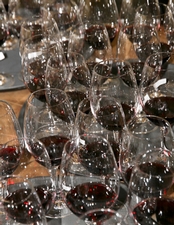 Barboursville Vineyards is clearly one of the finest wineries in
Virginia, but I would expand that praise and say it's clear to me it is one of
the finest in the United States. It won platinum for its 2009 Octagon ($40), a
red Bordeaux-style blend, and gold for its 2010 Cabernet Franc Reserve ($23).
But I was just as impressed with two wines from Barboursville made from Italian
grape varieties, the 2009 Nebbiolo Reserve ($35) and the 2011 Vermentino Reserve
($27). These two, both delicious, won silver awards. Barboursville Vineyards is clearly one of the finest wineries in
Virginia, but I would expand that praise and say it's clear to me it is one of
the finest in the United States. It won platinum for its 2009 Octagon ($40), a
red Bordeaux-style blend, and gold for its 2010 Cabernet Franc Reserve ($23).
But I was just as impressed with two wines from Barboursville made from Italian
grape varieties, the 2009 Nebbiolo Reserve ($35) and the 2011 Vermentino Reserve
($27). These two, both delicious, won silver awards.
Moet & Chandon entered but one wine, it's non-vintage Brut Imperial
($50), but struck gold with that one shot.
Charles Heidsieck, besides
the wine of the year, won a platinum award with its non-vintage Rose Reserve
($80) and a gold with its non-vintage Brut Reserve ($65).
River Road Family Vineyards was the "value" winery of the competition,
winning gold medals with three different pinot noirs priced under $20, all of
them from either the Russian River Valley or Sonoma County.
All of the winning wines have been posted on the results page at SommelierChallenge.com.
A Judge's Point of
View
Sommelier Challenge IV judge Maurice DiMarino, CS, of Island Prime, part of
the Cohn Restaurant Group, added his own unique perspective at his blog, Maurice's Wine Cru. Enjoy
this very nice blog post from one of those on the inside!
Email comments to [email protected] and follow
Robert on Twitter @wineguru.
Posted by Robert Whitley at 11:43 AM
|
|
September 12, 2012
While foraging around in the cellar looking for some wine to pour with the ham and cheese omelet I was planning to whip up for dinner, I happened to notice that a bottle of Madeira, Miles Ten Year-Old Malmsey, was leaking slightly. Not sure what to do about this, I brought it 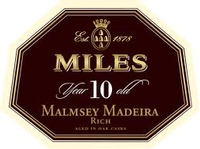 upstairs along with the two bottles of red and set it on the counter to be dealt with at a later date. Meanwhile, I started to work on the omelet, sautéing chopped ham, onions and garlic, plus a diced tomato, in olive oil and butter. When it was all cooked down to a slightly caramelized jumble of goodness, the eggs went into the sizzling skillet. I lowered the heat, uncorked one of the bottles of red wine and drizzled some into a glass. Yuck! The noxious musty perfume of corked wine assaulted my olfactory senses. upstairs along with the two bottles of red and set it on the counter to be dealt with at a later date. Meanwhile, I started to work on the omelet, sautéing chopped ham, onions and garlic, plus a diced tomato, in olive oil and butter. When it was all cooked down to a slightly caramelized jumble of goodness, the eggs went into the sizzling skillet. I lowered the heat, uncorked one of the bottles of red wine and drizzled some into a glass. Yuck! The noxious musty perfume of corked wine assaulted my olfactory senses.
I rinsed the glass and tested the next wine, but amazingly, this aroma was equally unpleasant except that I was now smelling nail polish remover rather than cork taint. This wine was suffering from a bad case of ethyl acetate spoilage, a microbial flaw that can result from certain yeasts. So now I was facing a gastronomic emergency consisting of two unpalatable wines plus an omelet that was within seconds of needing to be consumed! With no time to head back to the cellar I quickly opened the Madeira and poured out a glassful, hoping the unorthodox match wouldn’t be too ghastly.
Not only was the improvised pairing not ghastly, it was utterly delicious. With its velvety texture and nutty flavors the Madeira was an unusual but charmingly felicitous match for the omelet, picking up and emphasizing the omelet’s buttery-eggy-cheesy richness, and juxtaposing the salty/meatiness of the ham with layers of fruit as dense and complex as chutney. But am I the only person to have blundered into the extraordinary discovery that Madeira can pair deliciously with savory food?
Of course I’m not. For eons, cooks have spiked savory dishes such as soup with Madeira. Julia Child wrote in her “Mastering the Art of French Cooking” that it is “often the final flavor-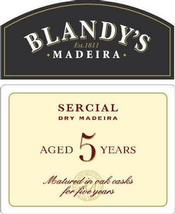 fillip for sauces,” and James Beard baked pureed parsnips with Madeira. But today’s visionary chefs are not content to simply cook with it, they are actually creating savory dishes to partner with Madeira rather than more traditional wines. One of these chefs is George Mendes, who demonstrated some of the pairings he’s come up with at a special dinner he hosted at his Manhattan restaurant, Aldea. I wish I’d been there to sample delicacies such as clams with olive oil and cilantro paired with Blandy’s 5 year old Sercial, and smoky country ham with Broadbent Boal 10 year old, but just reading about them inspires me to conjure up something a little more exotic than eggs next time I encounter a leaky bottle of Madeira in my cellar. fillip for sauces,” and James Beard baked pureed parsnips with Madeira. But today’s visionary chefs are not content to simply cook with it, they are actually creating savory dishes to partner with Madeira rather than more traditional wines. One of these chefs is George Mendes, who demonstrated some of the pairings he’s come up with at a special dinner he hosted at his Manhattan restaurant, Aldea. I wish I’d been there to sample delicacies such as clams with olive oil and cilantro paired with Blandy’s 5 year old Sercial, and smoky country ham with Broadbent Boal 10 year old, but just reading about them inspires me to conjure up something a little more exotic than eggs next time I encounter a leaky bottle of Madeira in my cellar.
Which brings me to the topic of what one ought to do in such a situation: Ignore it, wipe the bottle off and hope it stops leaking--or what? I put the question to a couple of experts, and here’s what I’ve learned. Bartholomew Broadbent, the Madeira savant and wine importer (Broadbent Selections) told me “Madeira is the only wine in the cellar which is not supposed to be lying down.” It doesn’t matter if the cork dries up or even falls into the bottle, he added. “Since the wine is already oxidized, no harm can come to it.” Then, with a wicked grin, he asked if I’d drunk the whole bottle that evening once I’d opened it. “You need not have bothered finishing it yourself,” he said. “You could have kept it open for many years, using something to keep the dust out of it.” (For the record, I did not drink the entire bottle that night.)
Another Madeira importer, Mannie Berk (The Rare Wine Co.), concurs: “Exposure to air has little effect on Madeira. It’s the only wine that has little to fear from a leaking cork”. He also assures me that once the bottle is open there’s no hurry to drink it. “Just leave it alone and drink when the mood strikes.”
As a matter of fact I think the mood is about to strike, so I’ll leave you with one last reminder from Bartholomew Broadbent: “If you have leaky bottles of Madeira in your cellar simply stand them up--and learn that they wouldn’t have become leaky if they’d been stored upright in the first place!”
Posted by Marguerite Thomas at 9:09 AM
|
|
September 9, 2012
For as long as I can remember Chateau Cheval Blanc and Chateau Ausone have
enjoyed nearly mythical status in the commune of Saint-Emilion, one of the
principal wine-growing districts of the Bordeaux region.
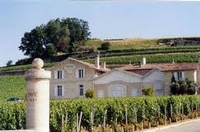 Situated on the right bank of the Gironde river,
Saint-Emilion dates to prehistoric times, and its first vines were planted by
the Romans in the second century. Saint-Emilion was left out of the 1855
Classification of Bordeaux, which ranked only the wines of the Medoc and Graves,
on the left bank of the Gironde. Situated on the right bank of the Gironde river,
Saint-Emilion dates to prehistoric times, and its first vines were planted by
the Romans in the second century. Saint-Emilion was left out of the 1855
Classification of Bordeaux, which ranked only the wines of the Medoc and Graves,
on the left bank of the Gironde.
So in 1955 it created a ranking of its own and the two estates, Cheval Blanc
and Ausone, were given the exalted classification of Premier Grand Cru Classe A,
at the pinnacle of quality and prestige in the famous wine village.
Though the ranking was reviewed every ten years, it was almost an article of
faith that no other chateau could ever match the prowess, often measured as the
ability to command the highest prices, of Cheval Blanc and Ausone. Almost.
In a stunning development announced this week, Chateau Pavie and Chateau
Angelus were elevated to Premier Grand Cru Classe A from Premier Grand Cru
Classe B, thus joining Cheval Banc and Ausone at the top of the heap. The new
classification came about after a court challenge annulled the results of the
most recent adjustment in 2006.
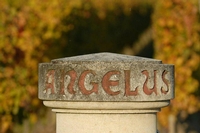 The changes were made by a seven-member panel of experts appointed by
the Institut National des Appellations d'Origine, which overseess French wine
appellations. The INAO had modified its review procedure by selecting wine
professionals from outside the Bordeaux wine trade, thereby avoiding any legal
challenge based upon conflict of interest. Representatives on the commission
came from Burgundy, Champagne, the Loire Valley and the Rhone Valley. The changes were made by a seven-member panel of experts appointed by
the Institut National des Appellations d'Origine, which overseess French wine
appellations. The INAO had modified its review procedure by selecting wine
professionals from outside the Bordeaux wine trade, thereby avoiding any legal
challenge based upon conflict of interest. Representatives on the commission
came from Burgundy, Champagne, the Loire Valley and the Rhone Valley.
I applaud both the courage and the astute evaluations of the commission,
which also promoted Canon-la-Gaffeliere, La Mondotte, Larcis-Ducase and
Valandraud to Premier Grand Cru Classe B. Previously La Mondotte and Valandraud
had been unclassified, so Premier Grand Cru Classe B was quite a leap for both.
Canon-la-Gaffeliere and Larcis-Ducase had previously been ranked Premier Grand
Cru Classe.
Email comments to [email protected]
and follow Robert Whitley on Twitter @wineguru.
Posted by Robert Whitley at 12:51 PM
|
|
September 8, 2012
When winemaker George Bursick departed Ferrari-Carano some years back I was
gripped with a bout of angst. First of all, George was not only a fine
winemaker, but a very decent man.
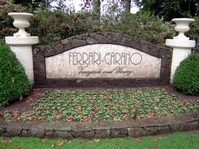 My concerns for the wines of Ferrari-Carano were another
matter. They were always well-made under Bursick and impeccably balanced. In
this era of bigger and riper must be better, I feared Ferrari-Carano would
follow the path of so many others and go for the blockbuster style that was, and
to some extent still is, in vogue. My concerns for the wines of Ferrari-Carano were another
matter. They were always well-made under Bursick and impeccably balanced. In
this era of bigger and riper must be better, I feared Ferrari-Carano would
follow the path of so many others and go for the blockbuster style that was, and
to some extent still is, in vogue.
I needn't have worried. Ferrari-Carano today is the same reliable outpost of
balance and elegance that it always was in the era of Bursick. Here at Wine Review Online I recently published a number of reviews -- all positive -- covering the latest wave
of new releases from this prominent Dry Creek Valley winery.
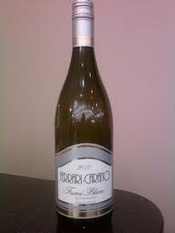 The Bordeaux-style blend Tresor, the Reserve Cabernet
Sauvignon and the Sonoma County Cabernet Sauvignon are superb. The same could be
said for the two new Chardonnays, and the remarkable Fume Blanc. I say
remarkable because the Ferrari-Carano Fume is produced in volume, but to very
high standards. The Bordeaux-style blend Tresor, the Reserve Cabernet
Sauvignon and the Sonoma County Cabernet Sauvignon are superb. The same could be
said for the two new Chardonnays, and the remarkable Fume Blanc. I say
remarkable because the Ferrari-Carano Fume is produced in volume, but to very
high standards.
The winemaking team at Ferrari-Carano -- Aaron Piotter makes the reds and
Sarah Quider the whites -- is to be commended. Their current wines are as good
as any ever made at Ferrari-Carano, if not better.
Email comments to [email protected]
and follow Robert Whitley on Twitter @wineguru.
Posted by Robert Whitley at 10:44 AM
|
|
September 6, 2012
 Earlier this year I made my somewhat annual trek to Bordeaux (I confess I have skipped a couple of vintages) for the primeurs tastings of the new vintage, 2011. Although a record number of journalists turned out, the event was sparsely attended by wine writers and critics from the United States. Earlier this year I made my somewhat annual trek to Bordeaux (I confess I have skipped a couple of vintages) for the primeurs tastings of the new vintage, 2011. Although a record number of journalists turned out, the event was sparsely attended by wine writers and critics from the United States.
Shortly after my return I was quizzed by a colleague about my loyalty to Bordeaux, given his considered opinion that interest in Bordeaux is in steep decline in the U.S.
"Besides the two of us," he said to me, "do you know anyone else who is still buying Bordeaux?"
In fact, I do, but I agree the numbers are dwindling. So much so that I no longer see Bordeaux prominently displayed in many fine wine shops, and when I do I am somewhat alarmed that the classified growths -- these are the wines most collectors prize -- don't seem to be in great demand.
The reason for this is painfully obvious. The Bordeaux wine trade -- bolstered by booming sales in Asia -- has priced itself out of the U.S. market. I know I no longer buy as much Bordeaux as I once did, and thus my Bordeaux stocks have dwindled.
Yet I haven't lost my desire to fill my cellar with great red wine. I have turned to the Killer B's -- Barolo, Barbaresco and Brunello. Given a choice, for example, between a Chateau Latour or a Gaja anything at a fraction of the price, I would take the Gaja every time.
 Whether you fancy yourself a wine collector, or merely like to keep a small stash of great red wine tucked away in a closet, the wines of Barolo and Barbaresco, and the Brunello di Montalcino of southern Tuscany, are a splendid alternative to the expensive offerings of Bordeaux. Whether you fancy yourself a wine collector, or merely like to keep a small stash of great red wine tucked away in a closet, the wines of Barolo and Barbaresco, and the Brunello di Montalcino of southern Tuscany, are a splendid alternative to the expensive offerings of Bordeaux.
With that in mind, I commend to you a piece written by my colleague Michael Franz, the Editor of Wine Review Online, evaluating the 2008 vintage in Barolo. "All's Well That Ends Well: Barolo 2008" is chock full of great wines that can be had for far less than you would pay for Bordeaux of comparable quality.
And with the money you save, you can buy more wine!
Email comments to [email protected] and follow Robert Whitley on Twitter @wineguru.
Posted by Robert Whitley at 1:04 PM
|
|
September 5, 2012
I've just pressed the button at Constant Contact and fired off the eblast
announcing our judges for Winemaker Challenge IV in January.
 Winemaker Challenge is but one of the five international wine
competitions I operate, and they are all near and dear to me for different
reasons. The common thread, however, is the concept of honoring accomplishment
with awards determined by judges with significant expertise in wine
analysis. Winemaker Challenge is but one of the five international wine
competitions I operate, and they are all near and dear to me for different
reasons. The common thread, however, is the concept of honoring accomplishment
with awards determined by judges with significant expertise in wine
analysis.
The point of it all is to win a medal from the experts, confirming what the
wine producer already believes to be true about his or her wine. Vintners yearn
to be able to say their wines are "award winning." That's a natural
instinct.
Smart vintners also look at competition medals as a sign they are working in
the right direction with their wines. Believe it or not, wine publications such
as The Wine Spectator, The Wine Advocate and Wine Review Online don't heap with
praise each and every one of the millions of wines produced every year. They
don't even comment or rate every wine. That would simply be physically
impossible.
That leaves positive reinforcement for most wineries to the world of wine
competitions and word of mouth, i.e., social media.
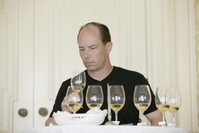 What I find fascinating and also gratifying is the
participation in competitions by wineries that already earn significant praise
from the wine publications. They do it because they understand the spirit of
competition, and they have utter faith in the ability of their wines to compete
on the world stage and win their fair share of awards. What I find fascinating and also gratifying is the
participation in competitions by wineries that already earn significant praise
from the wine publications. They do it because they understand the spirit of
competition, and they have utter faith in the ability of their wines to compete
on the world stage and win their fair share of awards.
I'm talking about producers such as Cakebread Cellars, Joseph Drouhin,
Charles Heidsieck, Moet & Chandon, Pine Ridge, Archery Summit, Penfolds and
the dozens of other established stars of the wine business that seemingly
already have it made, but send their wines to compete anyway.
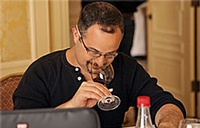 It is this spirit of competitiveness, that striving for
recognition, that makes all wines better over time. And we, the consumers of
wine, are well served when wineries go to such extraordinary lengths to herald
their progress. It is this spirit of competitiveness, that striving for
recognition, that makes all wines better over time. And we, the consumers of
wine, are well served when wineries go to such extraordinary lengths to herald
their progress.
Posted by Robert Whitley at 12:05 PM
|
|
September 4, 2012
How much should a bottle of wine cost? A glance at any given week's
recommended wines will confirm that price is all over the map, but I can attest to the fact that these picks are outstanding wines
regardless of price. So how come one cabernet costs more than another if the
quality is relatively equal?
First, there is the cost of the raw
material. A ton of Napa Valley cabernet costs a winery more than a ton of Sonoma
Valley cabernet because the land it is grown on is more valuable. By the same
reckoning, a ton of Sonoma Valley cabernet costs more than a ton of Paso Robles
cabernet, and for the same reason.
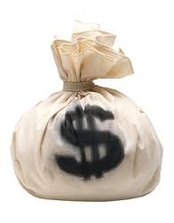 Oh, if it were only no
more complicated than that. There are other factors to consider, as well. One is
the intent and goal of the winery. It's no secret that lower yields produce
finer wines. But growers who sell grapes by the ton have no incentive to lower
yields because it hurts their bottom line. So wineries often pay a premium for
grapes that have been farmed with lower yields in mind. That cost is passed on
to consumers in the form of a higher price per bottle. Oh, if it were only no
more complicated than that. There are other factors to consider, as well. One is
the intent and goal of the winery. It's no secret that lower yields produce
finer wines. But growers who sell grapes by the ton have no incentive to lower
yields because it hurts their bottom line. So wineries often pay a premium for
grapes that have been farmed with lower yields in mind. That cost is passed on
to consumers in the form of a higher price per bottle.
It doesn't end
there. A winery can purchase expensive French oak barrels to age its wines, or
it can take the less expensive route and use American oak cooperage. You will
pay additional for wines aged in French oak.
But that's not all. The
winemaker may decide only new oak will do for his precious cabernet. That could
mean a huge outlay of cash for new barrels each and every vintage. You will pay
extra for that, too.
Then there is the curb appeal. Many wineries in
recent years have built elaborate chateau-like estates to impress visitors to
the all-important tasting room. Someone will have to pick up the tab for all of
that eye candy, and that someone would be you.
Production levels also
play a role in price. A winery that produces 50,000 cases of cabernet is likely
to charge far less than a winery that produces 1,000 cases, lest the
large-production cab gets stuck in a warehouse somewhere if the wine economy
slows or tastes shift to some other adult beverage.
Finally, there is
that fickle factor called the consumer. Ultimately, a wine is worth only what
someone is willing to pay for it.
Email comments to [email protected]
and follow Robert Whitley on Twitter @wineguru.
Posted by Robert Whitley at 5:44 PM
|
|
September 3, 2012
The lineup has been set for Winemaker Challenge IV, scheduled for Jan. 19-20
in San Diego, and it's another superb cast of characters that will evaluate the
entries in this unique wine competition.
The fourth annual Winemaker Challenge is expected to attract entries from
more than a dozen countries, making it one of the most important international
wine competitions in the United States. In the Winemaker Challenge format,
judges are divided into panels of three and taste their assigned wines "blind,"
meaning they have no information that would tip them as to the producer and
possibly influence any awards they might consider.
This year's cast:
Michael Beaulac
Pine Ridge Winery
Napa
Valley, California
If you like smooth, supple Cabernet with extraordinary depth and complexity,
and exquisitely balanced Chardonnay, then you would love the fruits of Michael
Beaulac's labor at Pine Ridge, where he is general manager and director of
winemaking. Michael started his career in the Alexander Valley as an assistant
to Chris Benz at Murphy-Goode, before skipping over the Mayacamas to make wine
in the Napa Valley, first at Markham and later St. Supery before taking the
reins at Pine Ridge.
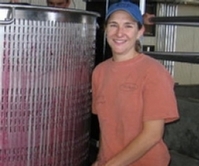 Amy Butler Amy Butler
Ranchero Cellars
Paso Robles,
California
Amy is a specialist in the Rhone grape varieties that are so successful and
popular in California's Central Coast, particularly the Paso Robles region. Amy
first caught our attention as the winemaker for Edward Sellers in Paso, and she
judged at our debut Winemaker Challenge in 2010. Amy now makes wine under her
own brand, Ranchero Cellars.
Morgan Clendenen
Cold Heaven Cellars
Santa Barbara
County, California
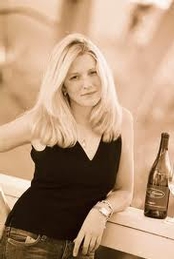 Morgan has a strong commitment to well-balanced wines that exhibit
structure, wines with elegance and backbone. She makes food friendly wines with good levels
of acidity, without sacrificing flavor or complexity. Morgan represents the
rugged individualism of the Santa Barbara County winemaking culture. Morgan has a strong commitment to well-balanced wines that exhibit
structure, wines with elegance and backbone. She makes food friendly wines with good levels
of acidity, without sacrificing flavor or complexity. Morgan represents the
rugged individualism of the Santa Barbara County winemaking culture.
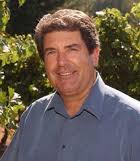 Ken Deis Ken Deis
Winemaking Consultant
Napa Valley,
California
Ken is a veteran Napa Valley winemaker with a long string of exceptional
vintages to his credit. That's because he spent more than a quarter-century at
Flora Springs, where he made outstanding Bordeaux-style blends (Trilogy) as well
as top-notch Cabernet Sauvignon, Chardonnay and Sauvignon Blanc. Ken now has his
own winemaking consulting business and most recently judged for us at the 2012 San
Diego International Wine Competition.
Gary Eberle
Eberle Winery
Paso Robles, California
 He is quite simply the Godfather of Paso Robles wine. Gary was the
genius who introduced syrah to Paso while making wine at the family winery,
Estrella River, in the early 1970s. Since starting his own winery more than 25
years ago he's introduced viognier and a red rhone blend, too. But it's the Paso
cabernet that nearly brings a tear to the big man's eye. Gary believes
passionately that cabernet sauvignon from Paso Robles is as good as any being
made. Visit the winery sometime and talk him out of a bottle of one of the older
Eberle Estate cabs and, we promise you, the case will be closed! He is quite simply the Godfather of Paso Robles wine. Gary was the
genius who introduced syrah to Paso while making wine at the family winery,
Estrella River, in the early 1970s. Since starting his own winery more than 25
years ago he's introduced viognier and a red rhone blend, too. But it's the Paso
cabernet that nearly brings a tear to the big man's eye. Gary believes
passionately that cabernet sauvignon from Paso Robles is as good as any being
made. Visit the winery sometime and talk him out of a bottle of one of the older
Eberle Estate cabs and, we promise you, the case will be closed!
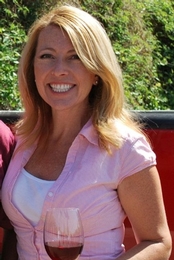 Sara Fowler Sara Fowler
Peju Province
Napa Valley,
California
Sara will be making her debut as a judge at Winemaker Challenge IV, and we
think her appearance is long overdue! Sara was Associate Winemaker for seven
years at Mt. Veeder and Franciscan, also in the Napa Valley, before joining Peju
to direct the winemaking team there in 2006. She's a specialist of the first
order in Bordeaux-inspired varietal wines and blends.
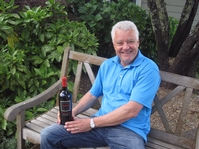 Daryl Groom Daryl Groom
Groom Wines
Barossa Valley,
Australia
Daryl is a star winemaker among a galaxy of star winemakers. He was once the
chief winemaker for Penfolds Grange, Australia's most sought-after and honored
red wine, and now makes a line of wines under his own Groom banner. Splitting
his time between Australia and California, Daryl also produces the acclaimed
Colby Red, a beautiful $12 red wine that was inspired by his son Colby, with a
portion of the profits going to heart research.
Joe Hart
Hart Winery
Temecula, California
Joe has been making wine in Temecula close to 30 years now and he's a
distinguished veteran of the California wine competition circuit. Joe is best
known for his Syrah, but he's really a man for all seasons, so you never know
what you might find in those barrels when you visit his small Temecula
winery.
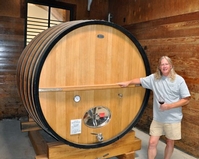 David Hopkins David Hopkins
Bridlewood Winery
Santa Ynez
Valley, California
I've seen a number of references to David as "the mad scientist" and I'm
scratching my head trying to figure out why. There's nothing mad that I can
detect about this 30-year veteran of winemaking along the Central Coast of
California. David has a deft touch with Syrah, Chardonnay and Cabernet, and his
wines are always balanced and sane. So maybe it's the hair!
Vernon Kindred
Fallbrook Winery
Fallbrook,
California
Vernon is now in his fourth year Fallbrook Winery, which may well be the
finest in Southern California. Fallbrook's Bordeaux blend, BDX, was voted top
Bordeaux blend at the 2011 Winemaker Challenge, and its Sauvignon Blanc has been
a consistent medal-winner at all of the Challenge competitions.
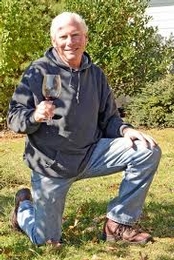 Craig Kritzer Craig Kritzer
Frogtown Cellars
Lumpkin
County, Georgia
Craig is a native of Atlanta who went west into the hills of
Lumpkin County, Georgia, to find a spot where he could craft world-class wines.
His Bordeaux, Burgundy and Rhone-inspired wines have been consistent winners in
the Challenge series of wine competitions, so it seemed only natural that we
would invite this talented winemaker to join us for the Winemaker Challenge.
Adam LaZarre
Villa San-Juliette
Paso Robles,
California
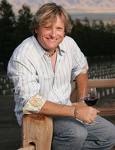 No California
winemaker has done more in the arena of value over the past decade than Adam. He
was on board when Monterey County's Hahn Estates affected a huge turnaround,
making superb red and white wines in the $12 to $18 price range. Wines so good
that they often took Best of Show awards at top wine competitions throughout the
state, including the highest honors in Los Angeles, San Diego and Monterey. Adam
has moved on to Villa San-Juliette in Paso Robles, where he's making a dynamite
merlot and a killer red Bordeaux blend, among other things. Adam is now
consulting on a white wine project in Spain's Rueda district -- in his spare
time. He also makes wine under his own label, LaZarre. No California
winemaker has done more in the arena of value over the past decade than Adam. He
was on board when Monterey County's Hahn Estates affected a huge turnaround,
making superb red and white wines in the $12 to $18 price range. Wines so good
that they often took Best of Show awards at top wine competitions throughout the
state, including the highest honors in Los Angeles, San Diego and Monterey. Adam
has moved on to Villa San-Juliette in Paso Robles, where he's making a dynamite
merlot and a killer red Bordeaux blend, among other things. Adam is now
consulting on a white wine project in Spain's Rueda district -- in his spare
time. He also makes wine under his own label, LaZarre.
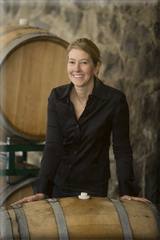 Susan Lueker Susan Lueker
Simi Winery
Healdsburg,
California
Susan is Director of Winemaking at Simi, long considered one of California's
benchmark wineries. Situated in the heart of Sonoma County wine country,
surrounded by the Alexander Vallley, Russian River Valley and Dry Creek Valley,
Susan is expert at making top-notch Cabernet Sauvignon, Merlot, Sauvignon Blanc
and Chardonnay, and she's a welcome addition to our team of judges.
Maureen Martin
Clos du Bois Winery
Geyserville,
California
Maureen is a 20-year veteran of the Sonoma County wine industry, the first 10
years at Chateau Souverain and the past 10 at Clos du Bois, where Chardonnay and
Merlot are king! This will be Maureen's second Winemaker Challenge.
Jon McPherson
South Coast Winery
Temecula Valley,
California
Jon hails from Texas but he's been making wine in the
Temecula Valley of California for nearly three decades. He started at the
Culbertson Winery, which later became Thornton, before moving on to South Coast,
where he has enjoyed his greatest success, twice seeing South Coast named Winery of the Year
at the California State Fair wine competition. John is well known for his
Cabernet, Merlot and Syrah, but he also makes perhaps southern California's
finest sparkling wines, too.
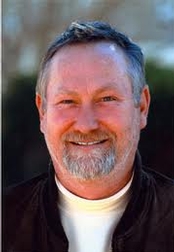 Kim McPherson Kim McPherson
McPherson Wines
Lubbock,
Texas
Kim, the brother of Jon, is a legend in Texas winemaking so it's about time we rounded him up for
the Winemaker Challenge. Prior to opening his own winery under the family name,
Kim made wines at arguably Texas' most renowned winery, Llano Estacado.
Marcus Notaro
Col Solare
Columbia Valley,
Washington
Marcus has been involved in winemaking in the Columbia Valley since 1995 and
is currently winemaker at one of the most exciting properties in the Pacific
Northwest -- Col Solare, the joing venture between Piero Antinori and Chateau
Ste. Michelle. Marcus' most recent Col Solare, the 2007 vintage, earned a
Platinum award at the 2011 Sommelier Challenge.
Aaron Pott
Pott Wines
Napa Valley, California
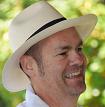 Yes, Aaron has his own brand under his own name, where he crafts
wines his way from Napa Valley fruit. Oh, by the way, he also has a degree from
Universite de Bourgogne in Dijon, France, was chief winemaker at two top-notch
Bordeaux estates in Saint-Emilion -- Chateau Troplong Mondot and Chateau La Tour
Figeac -- before taking on the role as chief international winemaker for Napa's
Beringer Wine Estates, and he ran Quintessa in the Napa Valley for a time. These
days, besides his own label, Aaron is one of the most sought-after winemaking
consultants in the Napa Valley. This will be his first stint as a judge at
Winemaker Challenge. Yes, Aaron has his own brand under his own name, where he crafts
wines his way from Napa Valley fruit. Oh, by the way, he also has a degree from
Universite de Bourgogne in Dijon, France, was chief winemaker at two top-notch
Bordeaux estates in Saint-Emilion -- Chateau Troplong Mondot and Chateau La Tour
Figeac -- before taking on the role as chief international winemaker for Napa's
Beringer Wine Estates, and he ran Quintessa in the Napa Valley for a time. These
days, besides his own label, Aaron is one of the most sought-after winemaking
consultants in the Napa Valley. This will be his first stint as a judge at
Winemaker Challenge.
Andy Reagan
Jefferson Vineyards
Monticello,
Virginia
We've been bound and determined to get Andy out from the East Coast to judge
at Winemaker Challenge, and now we've done it two years in a row. We wanted Andy because we've been
so impressed with his wines, which are grown and produced within a mile or two
of the site of the original Thomas Jefferson vineyard at the Jefferson estate in
Monticello, just outside of Charlottesville, Virginia. Andy makes a wonderful
Meritage, a gorgeous Petit Verdot, fabulous Cab Franc and some of the finest Viognier this side of
Condrieu..
Mike Richmond
Bouchaine Vineyards
Carneros,
California
Mike was among the first to pioneer Pinot Noir in California when he was
involved with the startup of Acacia Vineyards in the Carneros District of the
Napa Valley a quarter-century ago. He's now at Bouchaine and making some of the
most delicious and well-balanced Pinots and Chardonnays in all of California.
This will be Mike's third appearance as a judge at Winemaker Challenge.
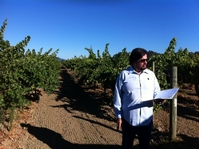 Ed Sbragia Ed Sbragia
Sbragia Family Wines
Healdsburg,
California
Big Ed was the chief winemaker at Beringer Vineyards for more than a
quarter-century. While at Berginer he twice earned Wine of the Year recognition
from The Wine Spectator, making him the only winemaker to have captured that
honor twice. Ed has since moved on and opened his own winery in Sonoma County,
where he specializes in vineyard-designate Cabernet Sauvignons and
barrel-fermented Sauvignon Blanc.
David Stevens
Davon International
Napa Valley,
California
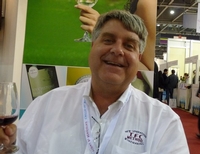 David is an international winemaking consultant who trots
the globe helping make better wine. In another life he was winemaker at Napa's
Bouchaine Vineyards, and before that worked closely with Dawnine Dyer as a
winemaker at the Napa sparkling wine producer Domaine Chandon. He also worked in
the cellars at Freemark Abbey winery in St. Helena. Dave is a
regular at the annual San Diego international wine competition,
where he frequently heads up the sparkling wine panel. David is an international winemaking consultant who trots
the globe helping make better wine. In another life he was winemaker at Napa's
Bouchaine Vineyards, and before that worked closely with Dawnine Dyer as a
winemaker at the Napa sparkling wine producer Domaine Chandon. He also worked in
the cellars at Freemark Abbey winery in St. Helena. Dave is a
regular at the annual San Diego international wine competition,
where he frequently heads up the sparkling wine panel.
Posted by Robert Whitley at 11:07 AM
|
|
 |
|